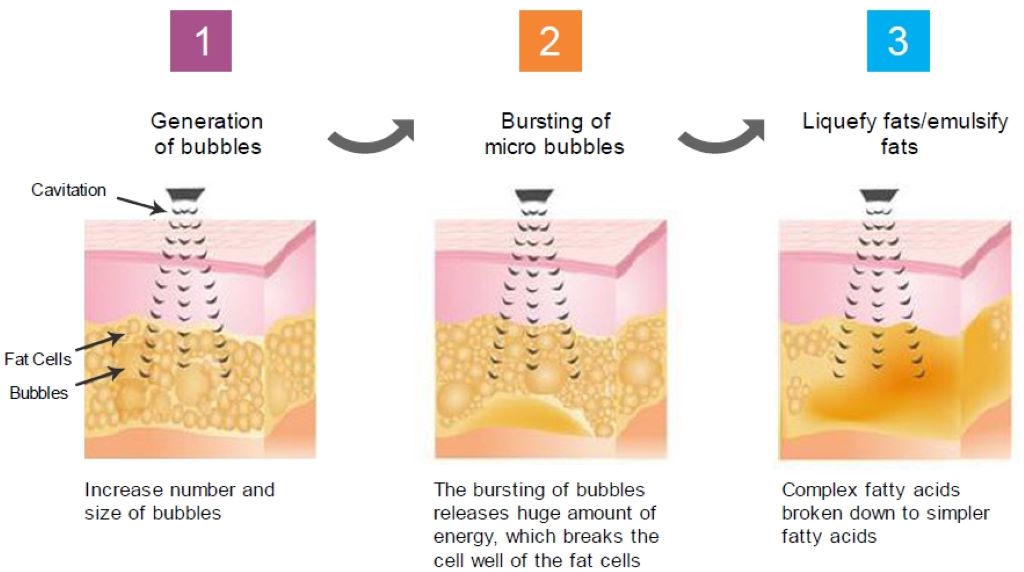Cavitation is a phenomenon that occurs in fluids when the pressure drops below the vapor pressure, causing bubbles to form and collapse. This process creates shockwaves that can cause damage to nearby surfaces, devices, or structures. In this article, we will discuss the working principle of cavitation and its various applications.
Understanding Cavitation
To understand the working principle of cavitation, we must first understand what cavitation is. Cavitation occurs when the local pressure drops below the vapor pressure of a liquid, causing it to boil and form vapor bubbles. These bubbles then rapidly collapse as they move to a region of higher pressure. This process creates intense shockwaves that can cause damage.
Cavitation can occur in any fluid, whether it’s water, oil, or even blood. It is most commonly observed in liquids that are pressurized and flow at high speeds, such as in pumps, propellers, and turbines. An example of cavitation can be seen when boiling water in a pot – the bubbles that form and collapse on the bottom of the pot create a knocking sound. If you’re curious to learn more about do at home cavitation machines work, check out this article: https://www.webmagazinetoday.com/cavitation-at-home/.
The Working Principle of Cavitation
The working principle of cavitation is based on the Bernoulli’s principle, which states that as the velocity of a fluid increases, its pressure decreases. When a fluid flows at high speeds through a narrow channel or over a curved surface, the local pressure can drop below the vapor pressure, causing cavitation to occur.
In pumps and turbines, this process can occur due to the rapid acceleration of the fluid as it passes through impellers or blades. The low-pressure region created behind these rotating elements can cause vapor bubbles to form and collapse, leading to cavitation.
In propellers and marine applications, cavitation can occur due to the high-speed flow over curved surfaces. As the water flows over the propeller blades, it creates a low-pressure region behind the blades, causing cavitation.
Effects of Cavitation
Cavitation can have both positive and negative effects. In some applications, such as in ultrasonic cleaning or wastewater treatment, cavitation is intentionally induced to enhance the process’s effectiveness. However, in most cases, cavitation has negative effects that can cause damage to equipment and structures.
In pumps and turbines, cavitation can lead to erosion and pitting of the blades, reducing their efficiency and lifespan. In marine applications, cavitation can cause noise pollution, vibration, and even structural damage to ships.
In hydraulic systems, cavitation can cause a decrease in pressure and flow rate, leading to a loss of control or failure of the system. In medical applications, such as in kidney stone treatment, the shockwaves created by cavitation are used to break up the stones. However, if not controlled properly, these shockwaves can also cause damage to surrounding tissues.
Controlling Cavitation
To prevent the negative effects of cavitation, various techniques are employed to control it. In pumps and turbines, design modifications such as increasing the blade thickness or using specialized coatings can help prevent cavitation. In marine applications, reducing the speed of the propeller or changing the blade shape can also reduce cavitation.
In hydraulic systems, proper design and maintenance are crucial to preventing cavitation. Keeping fluid levels and pressures at optimal levels and ensuring smooth flow through pipes and channels can help minimize cavitation. In medical applications, precise control of the shockwaves and monitoring of pressure levels are necessary to prevent damage.
Applications of Cavitation
Despite its negative effects, cavitation has various industrial and medical applications. In ultrasonic cleaning, cavitation is used to remove dirt and debris from surfaces by creating shockwaves that break up the particles. In wastewater treatment, cavitation is employed to break down organic compounds and remove pollutants.
In the medical field, cavitation is used in extracorporeal shock wave lithotripsy (ESWL) to break up kidney stones non-invasively. It is also used in dental surgeries to remove plaque and tartar from teeth. In the food industry, cavitation is used to emulsify liquids and create stable suspensions.
FAQs
Can cavitation occur in any type of fluid?
Yes, cavitation can occur in any fluid as long as the pressure drops below the vapor pressure.
Is cavitation always harmful?
No, there are some cases where cavitation is intentionally induced for beneficial purposes, such as in ultrasonic cleaning.
How does cavitation affect hydraulic systems?
Cavitation can cause a decrease in pressure and flow rate, leading to a loss of control or failure of the system.
What can be done to prevent cavitation in pumps and turbines?
Design modifications, such as increasing blade thickness or using specialized coatings, can help prevent cavitation in pumps and turbines.
Are there any medical applications of cavitation?
Yes, cavitation is used in extracorporeal shock wave lithotripsy (ESWL) to break up kidney stones and in dental surgeries to remove plaque and tartar.
Conclusion
Cavitation is a fascinating phenomenon that occurs in various fluids and has both positive and negative effects. Understanding its working principle and being able to control it effectively is crucial in preventing damage in industrial applications and utilizing it beneficially in others, even without exercise. Next time you hear a knocking sound when boiling water, remember the complex process of cavitation happening right before your eyes.


